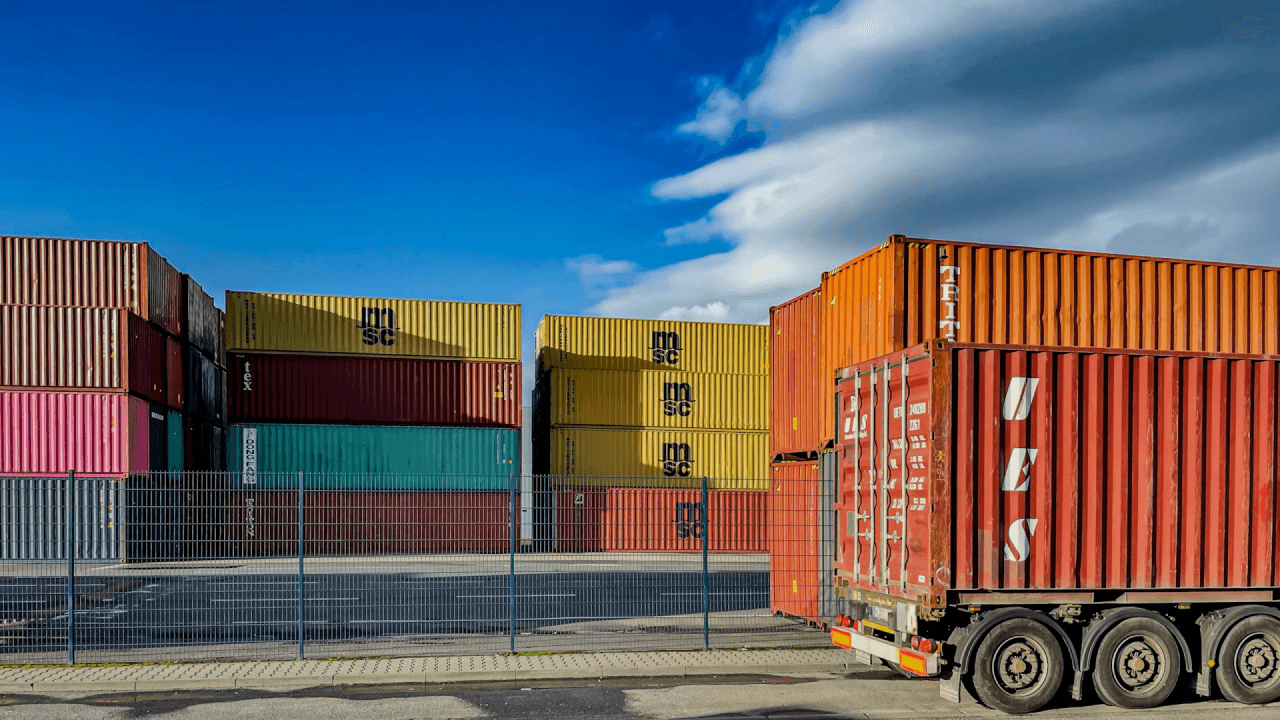News
Supply chain and open finance: the integration that could revolutionise the supply chain concept
Giuseppe Avolio
8 min

The integration of open finance could transform the supply chain by making financial flows more efficient and transparent. How can this be achieved?
The supply chain is prepared to collaborate with open finance, creating a synergy that promises significant advancements. Thanks to APIs, stakeholders at various stages of the supply chain can greatly enhance financial flows. In this article, we will explore how this can be achieved. Let’s get started!
Supply chain: meaning and how it works
The supply chain refers to all the elements involved in the journey from product creation to delivery to the end consumer. The term “chain” is intentional, as it conveys the idea of a series of interconnected stages where each link depends on the proper functioning of the previous and subsequent ones.
While the supply chain manages the physical flow of goods and services, supply chain finance (SCF) oversees the financial flow. SCF is defined as a collection of solutions aimed at optimising financial transactions between supplier and buyer companies within the supply chain. It includes various strategies designed to enhance collaboration and trust between these parties, providing mutual benefits to both producers and buyers.
This collaborative approach is essential because the supply chain is exposed to various risks. Common issues include situations where the buyer pays, but the supplier fails to ship, or where the supplier ships, but the buyer does not make payment. Such problems can significantly disrupt the stability and efficiency of the supply chain, resulting in substantial economic consequences.
Supply chain finance (SCF) includes key features such as reverse factoring and dynamic discounting. Reverse factoring, which can be inaccurately translated into Italian as “reverse invoice advance,” is the primary solution offered by SCF. But what does “reverse” mean in this context? Unlike direct factoring, where a supplier sells their outstanding invoices to a third party for immediate liquidity (often paying a commission to the intermediary), reverse factoring flips the roles. In this scenario, it’s the buyer—a large company—that approaches the third party for the advance, enabling the supplier to access capital under more favourable terms to fulfil their order. Essentially, the purchasing company reassures the supplier, saying, “Don’t worry, I’ve got your back; this way, you can get paid sooner and pay less for the loan.” The purchasing company then repays the advance at a significantly lower interest rate than what the financing company would charge in a direct factoring arrangement. Consequently, the purchasing company benefits from a lower final price.
Dynamic discounting operates on the same principle, with the purchasing company advancing liquidity without any intermediaries. In this case, the supplier issues an invoice with a due date, and the buyer collects it and provides the advance directly. What does the purchasing company gain? They receive an invoice discount, termed “dynamic” because it varies depending on when the payment is made: the sooner the payment is made, the less is paid, and vice versa.
In summary, the solutions offered by SCF aim to enhance capital management and reduce payment times by providing suppliers with early access to liquidity. Additionally, they enable small and medium-sized enterprises (SMEs) to obtain financing on more favourable terms by leveraging the creditworthiness of their buyers, who effectively support them in this process.
Open Finance: what it is and how it works
Open Finance refers to a system that enables the secure and consensual sharing of customer financial data among various participants to develop innovative products and services. The term “consensual” emphasises the necessity of obtaining permission from the data owner before sharing their information. Open Finance is rooted in the concept of Open Innovation, which views innovation not as a product of competitive secrecy but rather as a result of collaboration, sharing, and transparency.
Open Finance is seen as an evolution of Open Banking. While Open Banking primarily focuses on banking data, Open Finance broadens this scope to encompass the entire financial sector. As a result, Open Finance aims to create an interconnected financial ecosystem that encompasses not only banking services but also mortgages, insurance policies, investment portfolios, pension funds, and other financial products.
Open Finance is fundamentally built on the interactions between three key actors: customers, financial institutions, and Third Party Providers (TPPs). TPPs are external companies that exchange, process, and utilise financial data. In essence, customers decide whether to grant TPPs access to their financial data held by various institutions.
Once permission is granted, APIs (Application Programming Interfaces) serve as the technological backbone of Open Finance, acting as a ‘bridge’ between different IT systems. This enables efficient and secure communication of financial information. As a result, an ecosystem emerges where various entities share knowledge and collaborate to generate innovative solutions, ultimately aiming to enhance the economic structure as a whole.
To grasp the significance of this new paradigm, let’s use an example of organising an Easter Monday gathering. Imagine you want to arrange a traditional lunch with friends. You assign tasks, such as who will handle the barbecuing, who will cook the vegetables, who will bring the drinks, and who will buy the plates and glasses. As the organiser, you receive countless messages: the person in charge of the barbecue asks if the vegetable cook would like to grill, the drinks coordinator is unsure if they should also bring glasses, and the plate buyer wants to know how many courses are planned. It quickly becomes chaotic. You are the organiser, not the switchboard operator.
To streamline communication, you create a WhatsApp group titled ‘Easter Monday 2025.’ This innovation enables all participants to interact directly with one another without going through you. Similarly, Open Finance can be compared to this WhatsApp group, facilitating direct communication among various stakeholders.
We have previously explored the concepts of supply chains and Open Finance, as well as their operational aspects. Now, it’s time to examine how these two concepts could work together and the benefits this synergy could bring to the infrastructure.
If Supply Chain and Open Finance Integrate
The supply chain is a network of interconnected units that are constantly communicating with one another. However, the main challenge is that this communication often follows a linear and fragmented approach. Integrating Open Finance into the supply chain can make processes more fluid and enhance the overall infrastructure by increasing efficiency and operational efficiency.
So, how does this work? It’s through APIs (Application Programming Interfaces), which enable the continuous exchange of data and the execution of transactions among various participants, such as banking institutions, third-party companies (TPPs), supply chain finance (SCF) intermediaries, and different business management systems (ERPs).
The result is an ecosystem that enables the secure and rapid transfer of information, where processes are automated and optimised. The more efficient, transparent, and collaborative the communication is, the smoother and more stable the supply chain becomes.
The processes, the higher the productivity and, consequently, the turnover.
The Open Finance API specifically facilitates access to account information services (AIS) and payment initiation services (PIS). AIS allows for the retrieval of account balances and transaction details, while PIS enables the automatic authorisation of payments under certain conditions. This functionality provides a current and comprehensive view of a company’s financial status, allowing the assessment of its liquidity and spending capacity. Additionally, it streamlines and speeds up transactions within the supply chain. Let’s explore a practical example.
As the owner of GiardiNani S.r.l., a company that manufactures garden figurines, you receive a large order from a purchasing company in the UK. This is the first time you’ve had to produce such a significant quantity of garden figurines, and you lack the funds to begin production. Fortunately, the purchasing company introduces you to reverse factoring, which you find promising.
You issue an invoice with a 60-day due date to the purchasing company, which approves it through its ERP management system. Via an API, the ERP automatically sends the invoice data to a third-party reverse factoring company, which determines whether to provide financing. This financing company can access the financial information (AIS) of both the purchasing company and GiardiNani to assess their financial situations and develop loan terms.
Due to the purchasing company’s high credit rating, it offers a loan with excellent terms, which GiardiNani gladly accepts. After this, the reverse factoring company issues the payment automatically (PIS). With the cash received, your factory can begin producing garden figurines.Finally, the purchasing company is responsible for repaying the loan to the reverse factoring company at the end of the 60 days. Their management systems, connected via an API, communicate seamlessly to facilitate the transaction.
What happened? Almost automatically, GiardiNani gained access to liquidity at much more favourable costs and conditions than it would have obtained through traditional financing. Open Finance enables quicker transactions by providing access to financial data (Account Information Services – AIS) and facilitating automatic payments (Payment Initiation Services – PIS).
The exchange of information and communication between management systems reduces human error and accelerates the entire process. Transparent data allows for a more accurate, timely, and efficient assessment of credit risk.
Overall, the supply chain benefits from these improvements because the processes run smoothly, without any lost time. And as we know, time is money.
A consideration for the future
The integration of supply chain management with Open Finance currently focuses on enhancing system responsiveness and improving process efficiency. The next phase involves implementing artificial intelligence and machine learning to develop systems capable of predicting liquidity crises and insolvency risks. These advancements will enable the dynamic optimisation of services based on market conditions, as well as the creation of risk-balancing models and other benefits.
Given that transparency is a key principle of Open Finance, blockchain technology is likely to play a significant role in this new approach to managing and optimising financial flows. In the cryptocurrency sector, we can already see examples of initiatives aimed at improving supply chain processes, such as VeChain. We are still in the early stages of this development and will continue to closely monitor this trend.




